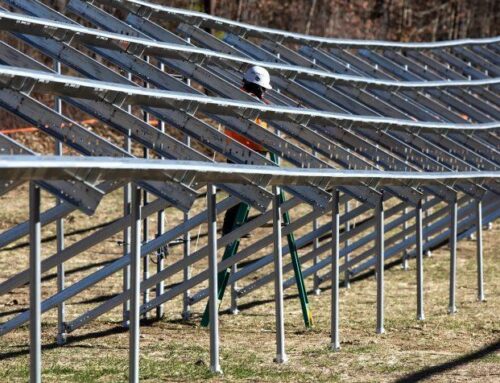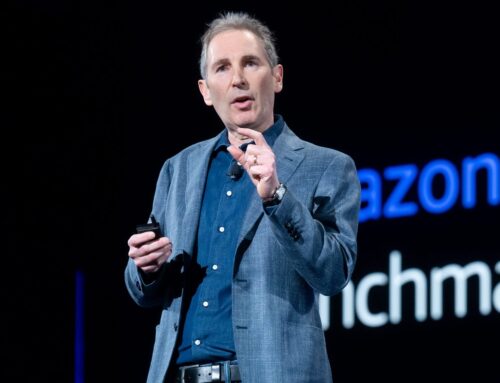Mitigation banking: A new sustainable development model
November 20, 2025
Sustainable land and infrastructure development goes beyond a project’s material and energy footprint to consider how it interacts with the broader landscape.
By MICHELLE HAVEY and DAN BERLIN
Anchor QEA

Havey
|

Berlin
|
In the Pacific Northwest, sustainability is no longer just about how and what we build; it’s also about what we restore. From wetlands near Olympia to stream corridors in Pierce County and waterfronts along Puget Sound, a growing number of public agencies and developers are investing in mitigation strategies that offset the ecological footprint of construction and preserve the region’s natural resilience.
These programs represent a new model of sustainable development. Rather than treating environmental restoration as an unavoidable cost of doing business, mitigation programs view it as an asset with tangible economic value and long-term community benefit.
Traditionally, sustainable building focused on the footprint of a structure, including materials, energy use and emissions. But for land and infrastructure development, sustainability also depends on how a project interacts with the broader landscape. For example, wetlands that filter stormwater, riparian areas that protect against flooding, and habitats that sustain fish and wildlife.
Image courtesy of Port of Tacoma
[enlarge]
Ports, counties and municipalities throughout Washington are rethinking how to meet sustainability goals and regulations more efficiently and effectively. Rather than handling mitigation individually for each project or concurrently at the time of impacts, many are investing in larger-scale restoration projects that can serve multiple developments and agencies, as well as entire watersheds.
This approach protects valuable habitat while providing greater regulatory certainty and cost predictability, factors that are attractive to both the public and private sectors.
Mitigation banking has become a cornerstone of this shift toward building sustainably at the watershed scale. At its core, mitigation banking is a market-based system that restores or creates large tracts of wetland, stream or shoreline habitat in advance of future development. Once a project is approved by environmental regulators, the restored site generates measurable ecological “credits.” Each credit represents a quantified habitat improvement, such as restored wetland acreage or enhanced habitat function for salmon, that can be purchased by a developer to offset an equivalent impact.
This is a mutually beneficial arrangement. Developers receive a reliable, pre-approved mitigation option, and the environment gains high-quality, consolidated restoration instead of fragmented, site-specific mitigation that has a higher risk of failure. In practical terms, it’s faster and less risky for builders, and it results in larger, more ecologically valuable restoration projects for communities.
In Washington, mitigation banks have been established for wetlands, aquatic resources and fish habitat. Projects in places like Bear Creek in Bellingham and Upper Clear Creek in Tacoma demonstrate how different landscape typesincluding freshwater wetlands, riparian corridors and nearshore marshescan be restored under this model. Each site creates measurable ecological benefits, verified through long-term monitoring and adaptive management.
Photo by Anchor QEA
[enlarge]
Mitigation banking is one part of a larger shift toward consolidated, supervised mitigation programs. A number of emerging mitigation programs share a common principle: restore first, build later. The distinction lies in who sponsors the work and how it’s funded.
Mitigation banks are typically created by public agencies, private developers or joint ventures that invest their own capital to build restoration projects in advance. Once approvedwhich can take a considerable amount of time and effortthey sell credits on the open market to offset impacts from other developments.
Advance mitigation projects are usually led by cities, counties or municipal agencies that anticipate their own future needs. Rather than selling credits, these public agencies create restoration sites in advance to offset environmental impacts from upcoming projects. The goal is to save time by reducing permitting uncertainty and potential delays to planned development, and also to achieve better ecological outcomes. The earlier these projects are built, the more valuable they become.
In-lieu fee (ILF) programs offer a third approach. In these programs, developers that can’t find a suitable mitigation site pay a fee to a county or nonprofit sponsor, which pools the money to build larger, regional restoration projects.
ILF programs in Pierce County, King County and Hood Canal offer important options for developers to offset unavoidable impacts. Credit sales from these programs have funded important projects that restore wetlands, streams and fish habitat on a regional basis. By ensuring that funds are used efficiently and restoration occurs where it will have the most benefit, ILF programs demonstrate how sustainability depends not only on ecological design, but also on sound governance and management.
Together, these three mechanisms form a novel framework for sustainable development: one that replaces piecemeal, project-by-project mitigation with coordinated investments that deliver broader public benefit.
While Puget Sound shorelines often draw the spotlight, much of the region’s mitigation work happens inland. Wetlands, streams and riparian corridors in growing suburban and rural areas are being restored to offset road extensions, industrial parks and public works improvements.
For example:
The Bellingham Mitigation Bank proposes to protect 95 acres of forested habitat that will significantly enhance habitat connectivity and open space along Bear Creek.
Near Bremerton, the Kitsap Nearshore Umbrella Mitigation Bank will remove historic fill at multiple sites to restore valuable marsh habitat, including along the Ross Creek estuary. This will create highly functioning off-channel habitat for salmon.
Image by Anchor QEA
[enlarge]
In Pierce County, Port of Tacoma’s Upper Clear Creek Mitigation Site restored 41 acres of degraded wetlands and re-routed Clear Creek to restore fish habitat, connect the wetland to historic floodplain areas, and reduce flood risk for nearby communities.
These projects reflect a broader understanding of sustainable development. While building projects still revolve mostly around where people live and work, they must also account for the ways in which these environments interact with and support the natural systems around them.
Urban environments present unique opportunities and constraints for environmental restoration. Land values are high, available space is limited, and environmental degradation is often severe. Yet these conditions can make restoration even more valuable.
Recent efforts by the city of Seattle, Port of Seattle and Port of Tacoma have shown that small, strategically located projects, such as eelgrass restoration, shoreline benches or marsh restoration along estuaries, can provide critical ecosystem services in dense areas. Regulators are responding with more flexible rules that emphasize functional performance over acreage, allowing urban projects to qualify for mitigation credits when they deliver measurable ecological results.
This evolution underscores a central theme of sustainable development: working where people and nature intersect to create the greatest overall benefit.
Mitigation banking, advance mitigation and in-lieu fee programs are helping to transform the perception of sustainable building. Whether on the coast or inland, the same principles apply: plan restoration where it makes the biggest difference and build with nature in mind.
Michelle Havey is a partner and principal fisheries biologist and Dan Berlin is a partner and principal scientist at Anchor QEA, an environmental science and engineering consulting firm specializing in aquatic, shoreline and water resources projects.
Other Stories:
Search
RECENT PRESS RELEASES
Related Post






